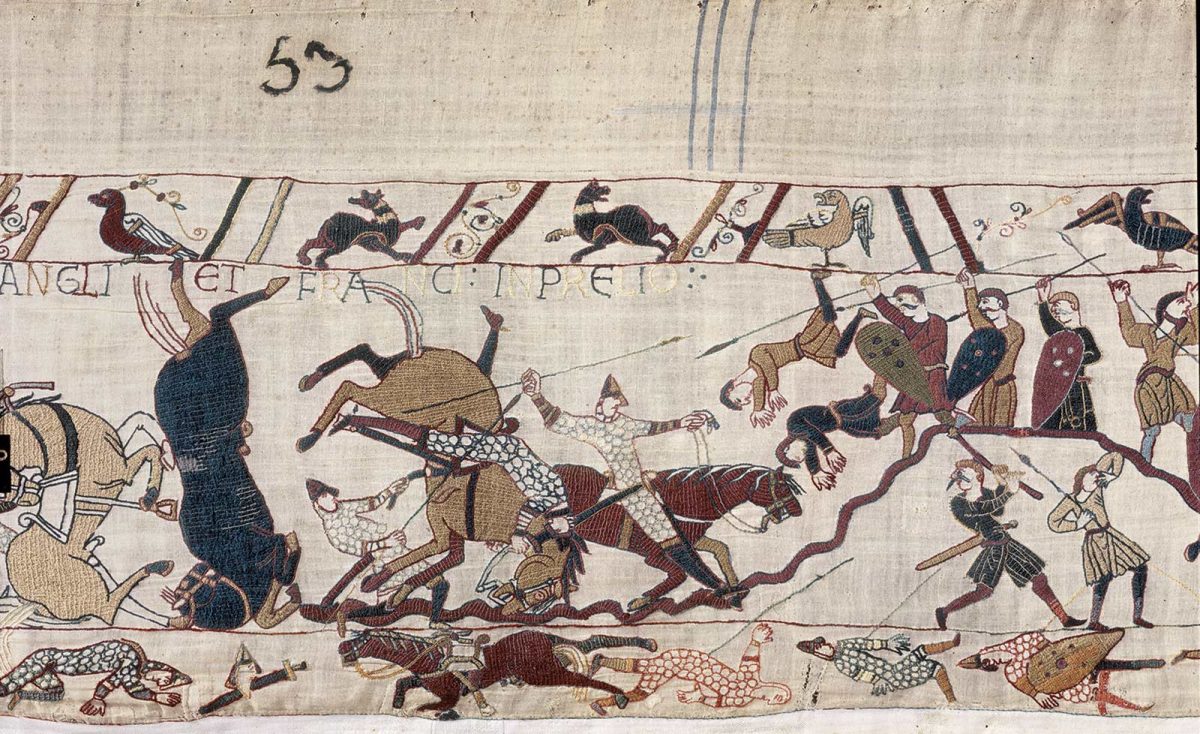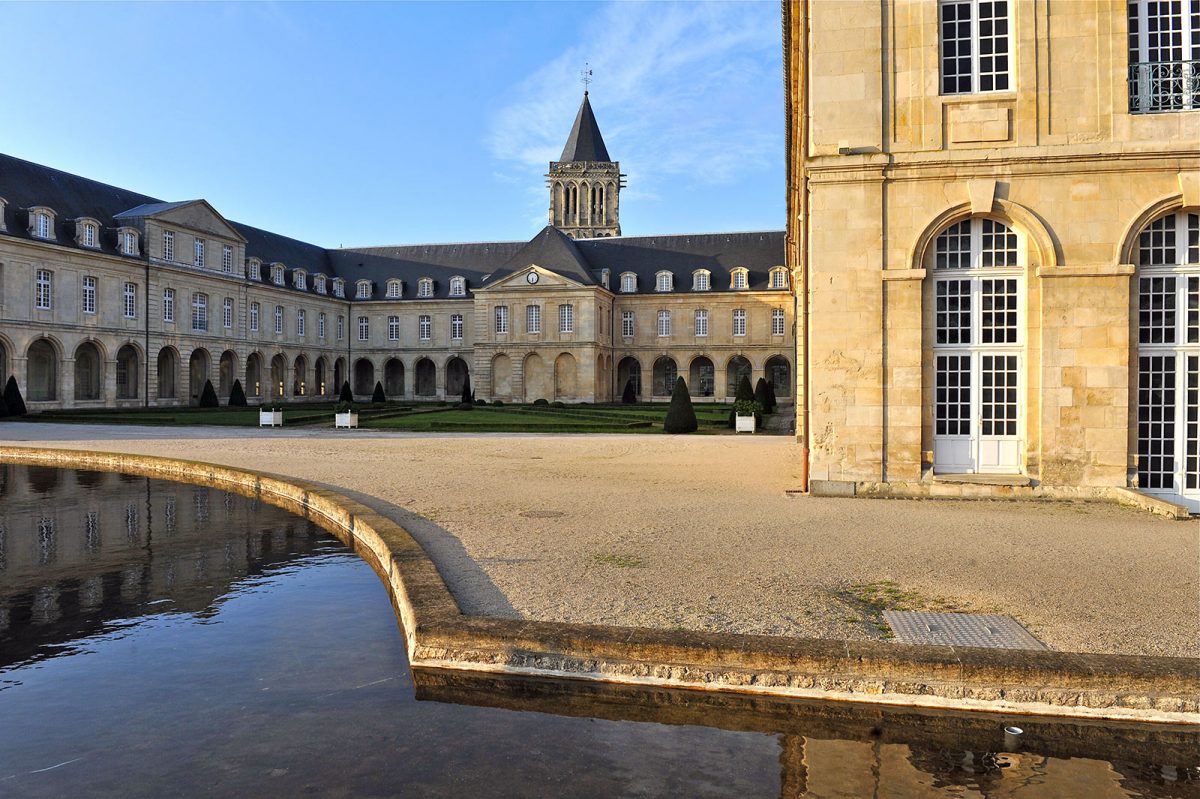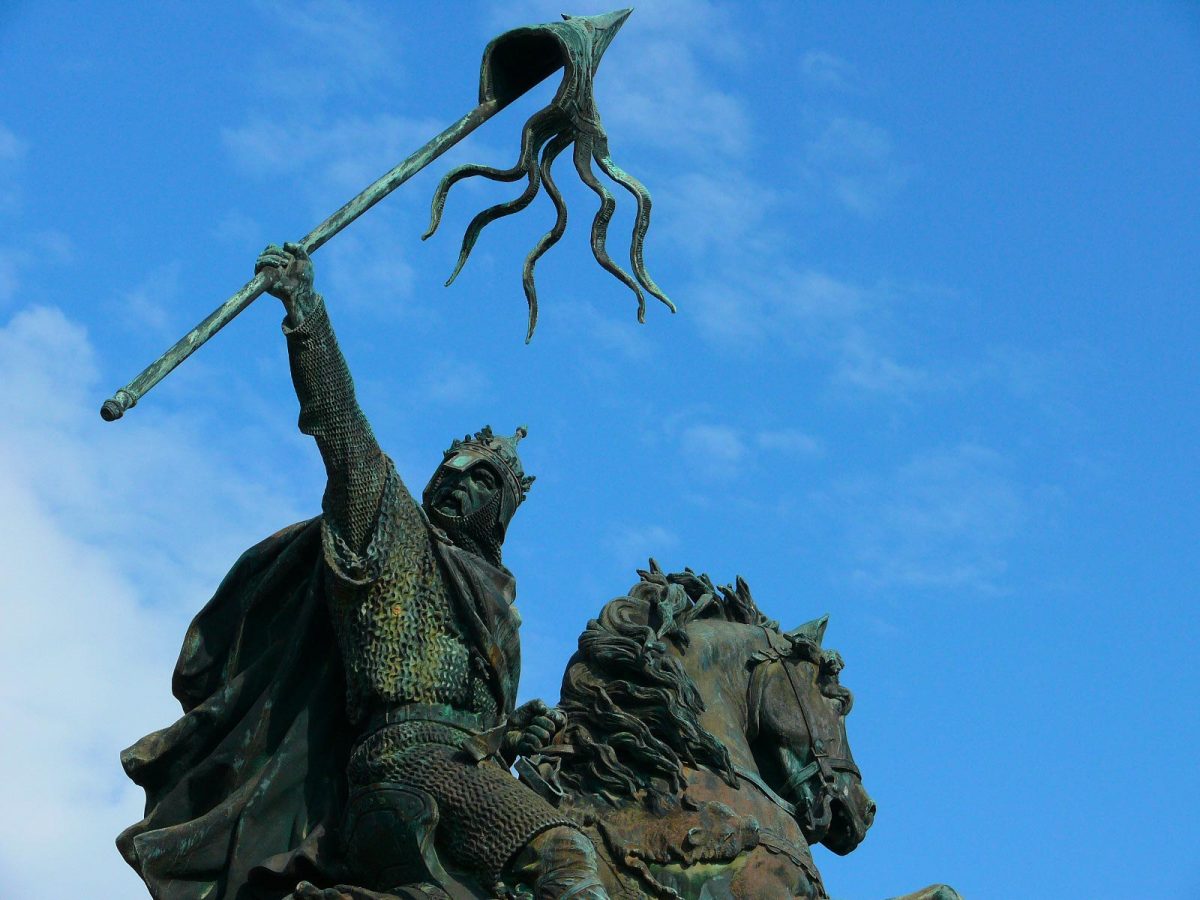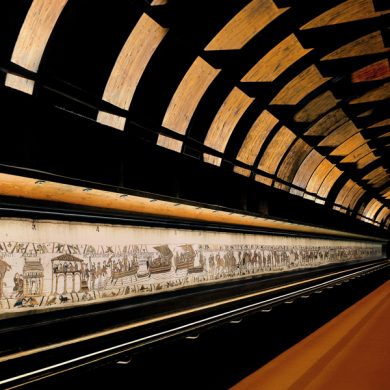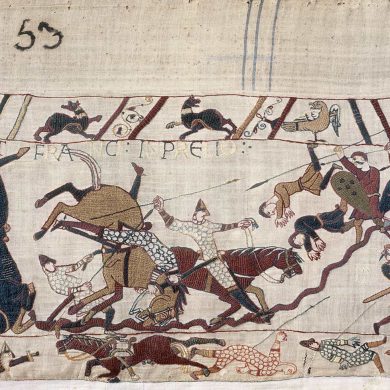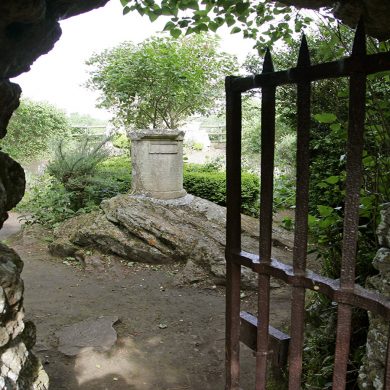Updated on 15 October 2020
Reading time: 2 minutes
The great-great-great-grandson of the Viking warlord Rollo, William the Conqueror, would vastly expand his ancestors’ tradition of constant territorial expansion – the kingdom of England would be his.
Duke of Normandy
One fine day in 1027, on returning from the hunt, Robert the Magnificent, the 6th Duke, spotted Arlette, a tanner’s daughter, washing in the waters at the foot of his castle. Love at first smell? At any rate the story goes that it was duly concluded as a liaison on the wrong side of the blanket and would result in the bastard child William. In 1035, Robert met an untimely death (as so many did) and William became Duke at the tender age of 7. He immediately became the centre of intrigue by scheming barons and in 1046 there was even a failed attempt to assassinate him. Warned of their approach, he took a moonlight flit from Valognes just in time, and, crossing the treacherous bay of the Veys, managed to reach the safety of Falaise castle. The next year he trounced his enemies in the battle of Val-ès-Dune and was able to impose his writ and rule on all those who opposed him with effective ruthlessness.
The Battle of Hastings in 1066
He had built a castle and two abbeys for himself and his Queen in Caen, effectively making it his power base and political capital in the area. In 1066 his cousin Edward the Confessor, King of England, died childless. Within 24 hours his brother-in-law, Harold, Earl of Wessex, had himself crowned King, thereby perjuring himself of his oath of fealty and obedience taken in Bayeux to William earlier. Trial by battle followed, in which William would prevail and Harold killed. It was October 14th, 1066, a turning point in English history.
On Christmas Day the same year William was in his turn crowned King, also in Westminster Abbey.
The Norman influence had already been spread far and wide by others, notably into southern Italy and Sicily, indeed to the gates of Rome, while William and his successors would continue to impose by military might, administrative power and architectural prowess, their reach across Britain and the Continent for generations to come.

